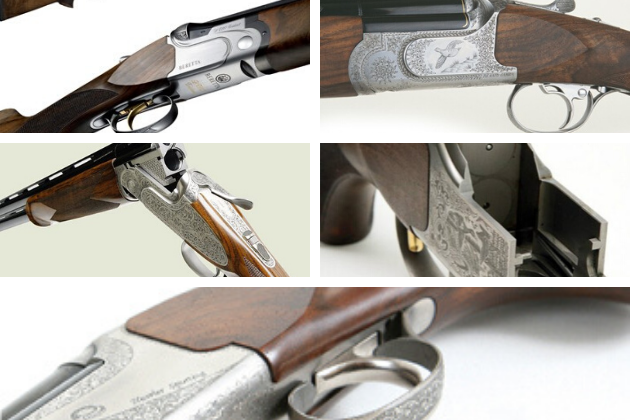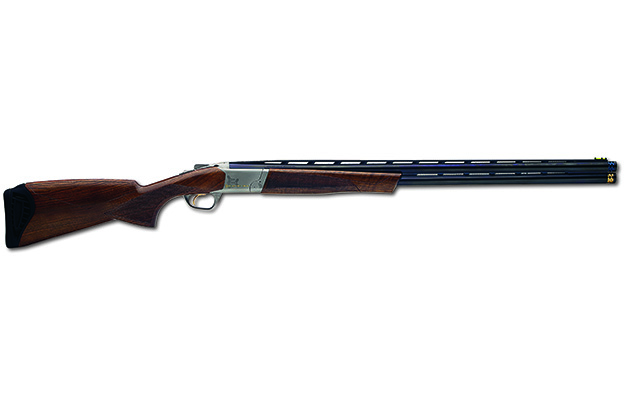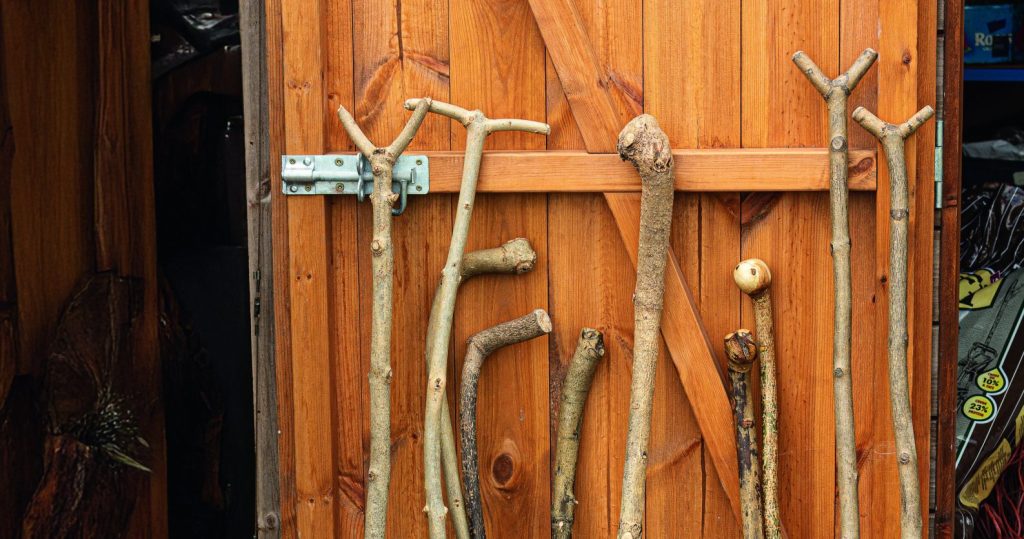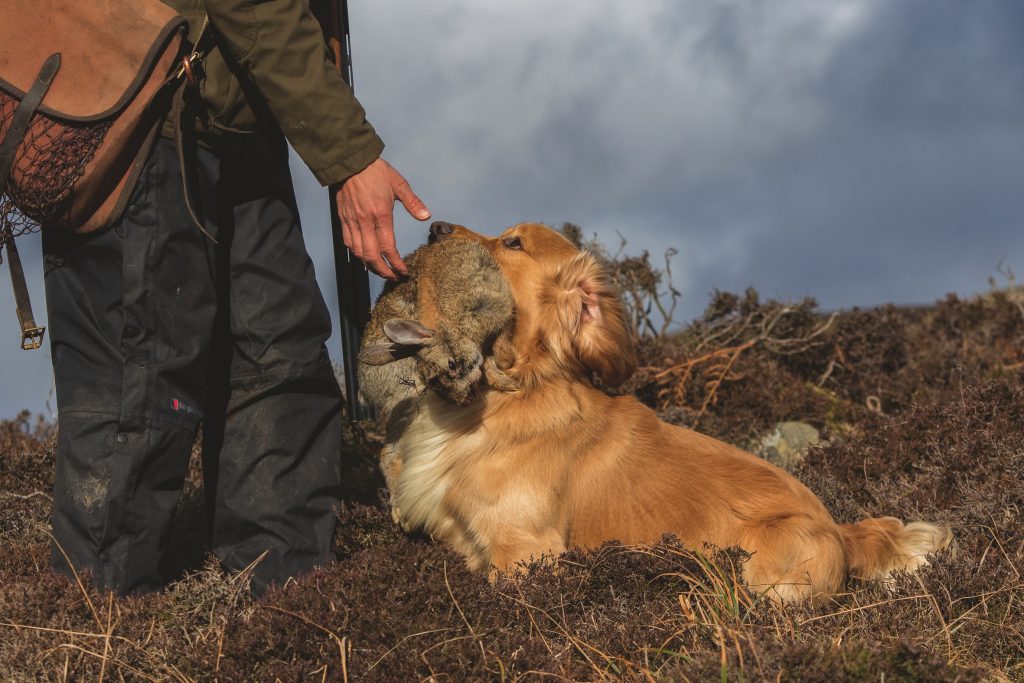So you’re on the hunt for a reliable, good quality secondhand over under shotgun. Which is going to suit you…
Win CENS ProFlex DX5 earplugs worth £1,149 – enter here
A gunsmith’s guide to buying guns second-hand
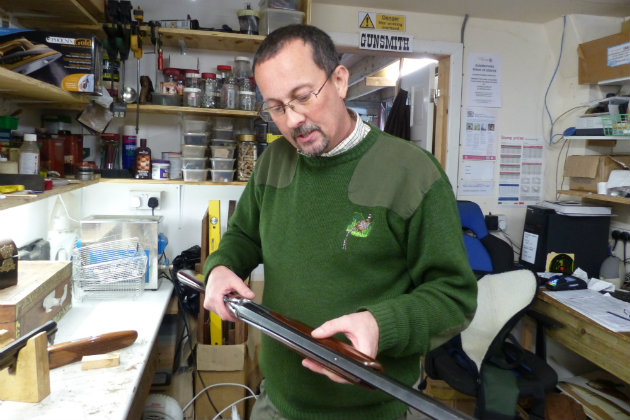
What’s the best way to go about buying guns second-hand though? What do you look for and what are the potential pitfalls?
To find out more I visited The Country Sports Shop in Devon to speak to the experts.
I met shop manager Chris Lamb, himself a keen shooting man who particularly enjoys his game and clay shooting. “The second-hand market is a bit patchy at the moment, so it can be good for used gun buyers. The availability of inexpensive new guns is influencing people’s decisions; you can get a new Turkish gun for the price of a pre-owned Italian one. Steel proofed barrels are also becoming a more important part of the deal, and, again, the new gun may be more attractive to some purchasers. Although I personally don’t feel that anyone other than wildfowlers are likely to be affected.”
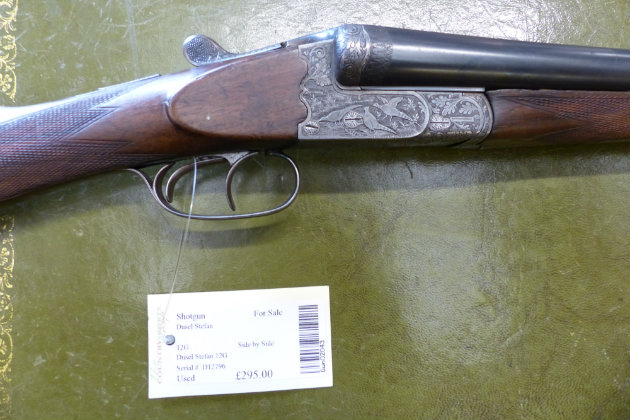
This German side-by-side is selling for only £295
Advantages
What are the advantages of buying second-hand? “Unless it’s from a premium maker, a second-hand gun has lost all the value that it’s going to lose. That’s a big plus for many people with limited funds. A used gun will probably cost around £500, and although you don’t get the full manufacturer’s warranty we offer a guarantee of between six and 12 months. There’s also the brand; you’re getting the product of a known manufacturer at a fraction of the cost. Mirokus and Brownings always sell well second-hand and don’t hang around for long. Lanber is also popular, I’ve got three people waiting for the right one to come in.”
“Italian shotguns offer great value for money and a strong heritage,” Chris told me. “Spare parts are never an issue, unlike some of the Spanish names that have gone out of business. Having said that, traditional side-by-sides from Spain have always carried a great reputation. I’ve often heard it said that if you can’t afford an English game gun you should buy an AYA.”
So why buy from a shop rather than privately, probably saving a great deal of money? Chris is certain on this. “All our guns are fully inspected, cleaned and serviced before they go on sale, and we provide a warranty against the unlikely event of a problem. We pride ourselves on the second-hand shotguns we supply and customer satisfaction. If you buy privately you’re getting the gun as seen with little chance for comeback if anything goes wrong.”
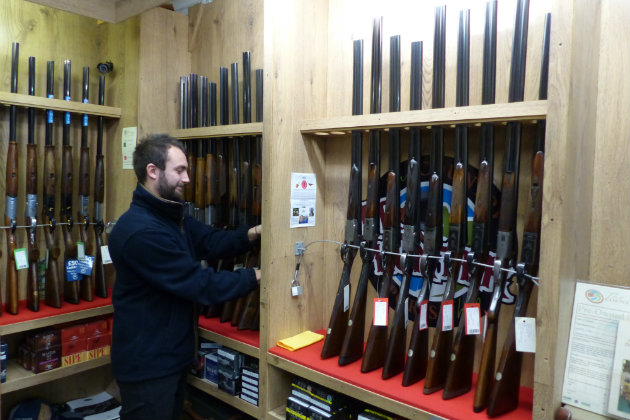
Shop manager Chris Lamb with a small selection of the second-hand guns available
Checks
The resident gunsmith, Paul Dobson of Caliber & Bore Gunsmiths, suggested some simple checks for a potential buyer:
- Mount the gun – does it fit you? The gunsmith may be able to make adjustments, but it is much easier and more cost-effective to buy a used gun that fits to start with. We use a laser system to help check the customer’s compatibility with a potential purchase.
- Start at the muzzle end. If the gun has removable chokes, ask for the key and check that they can be taken out – seized chokes can be expensive to get released. Otherwise make sure that the chokes are finger tight.
- Check the barrel ribs for dents or rust, and then look over the barrels for signs of damage or wear.
- Inspect the insides of the barrels. Look out for pitting or ring bulges.
- Take off the fore-end and inspect the faces, especially where metal meets metal. Dents and scratches may indicate heavy wear.
- While the fore-end is off, holding the gun by the barrels and give it a small shake. There should be no looseness. Then, holding the stock in one hand and the barrels in the other, gently twist the gun. If there is any movement the gun may be out of proof.
- Using snap caps, test the triggers, whether the ejectors (if fitted) operate, and if the safety catch works. Using trigger pull scales, see what the release is – it should be between 3½ and 5 pounds.
- Inspect the screws on the action to see if the heads are sharp with flush edges. Any competent gunsmith who may have burred a screw will face it over and polish it back to original condition.
- Examine all woodwork thoroughly, and check carefully for any minute cracks.
Spares
You do need to consider sourcing spare parts. “I can still get parts for old Lanbers even today,” Paul told me. “But there are some relatively new guns that I cannot. In these cases I need to machine them myself, this can add expense. Sidelocks are beautiful guns but not cheap to work with; if I were searching for a nice side-by-side I’d look at a standard classic Anson & Deeley pattern boxlock.”
After speaking to Chris and Paul and looking at their stock it was clear that the bargains are out there. You’ll find gun shops offering quality guns at sensible prices all over the country. Hopefully you’ll find the one that’s right for you – good hunting!
Three value for money second-hand shotguns
Mike George has previously picked out the best second-hand European shotguns, high grade guns and Sporters, now he is back…

Three value-for-money second-hand Sporters
Medalist Sporter More than 30 years ago, the UK Browning importers could offer an impressive range of guns – everything…
Top 5 tips for buying guns second-hand
- Make the shop owner is aware of what you want the gun for – clays, walked-up game, wildfowling? They’ll show you the guns that will meet your needs.
- Keep an open mind, but decide on a budget and stick to it. It’s easy to get carried away.
- Don’t be put off by fixed chokes, the shop owner should be able to tell you what they are. Quarter and half choke are a good combination for general use.
- Check the chamber length meets your needs. Older guns may only be chambered for 2½in cartridges. This may be fine for game or clays, but you may want to shoot longer loads.
- Proof marks will tell you a lot about the gun, and the sales assistant should be able to help you to interpret them. It’s illegal to sell any firearm that is out of proof. Importantly, the fleur-de-lis mark indicates that a gun is proofed for use with steel shot.
Related Articles
Get the latest news delivered direct to your door
Subscribe to Shooting Times & Country
Discover the ultimate companion for field sports enthusiasts with Shooting Times & Country Magazine, the UK’s leading weekly publication that has been at the forefront of shooting culture since 1882. Subscribers gain access to expert tips, comprehensive gear reviews, seasonal advice and a vibrant community of like-minded shooters.
Save on shop price when you subscribe with weekly issues featuring in-depth articles on gundog training, exclusive member offers and access to the digital back issue library. A Shooting Times & Country subscription is more than a magazine, don’t just read about the countryside; immerse yourself in its most authoritative and engaging publication.






